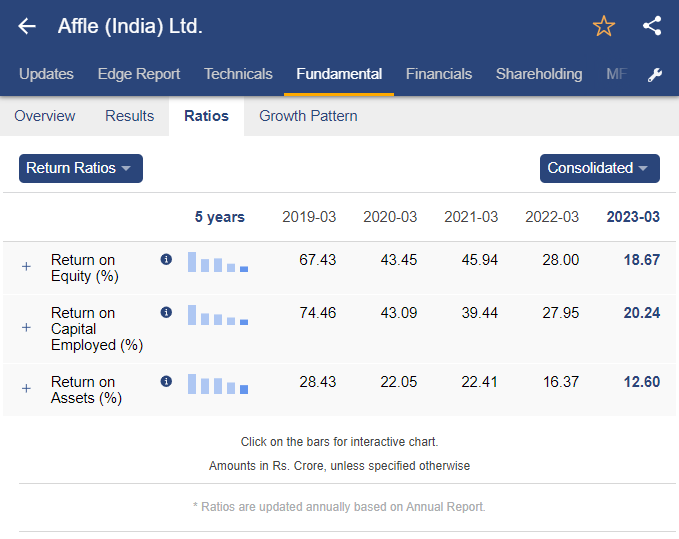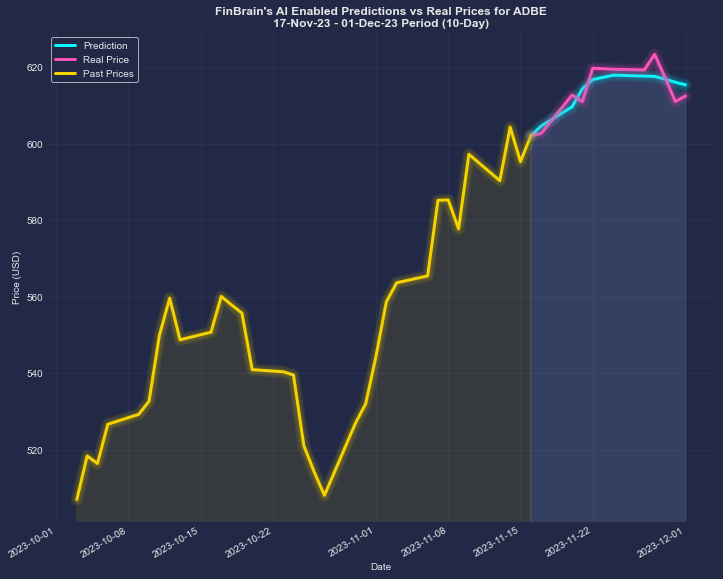Market coverage is among the most important factors to be considered when evaluating AI-based trading platforms. It determines the number of market and asset types are accessible. A platform that offers comprehensive market coverage will allow investors to diversify their portfolios and discover global trading opportunities and adapt to different strategies. Here are 10 suggestions on how you can evaluate the coverage of the platforms.
1. Evaluate Supported Asset Classes
Stocks: Make sure that the platform includes major stock exchanges (e.g., NYSE, NASDAQ, LSE, HKEX) and also includes small-cap, mid-cap, and large-cap stocks.
ETFs. Check that the platform offers a variety of ETFs, so you get diversified exposure.
Options and futures. Check if the platform includes derivatives like options, futures and other instruments that leverage.
Forex and commodities: See whether your website offers Forex and commodities, precious metals, and energy commodities.
Cryptocurrencies. Verify if the currency supports the major altcoins and cryptocurrencies (e.g. Bitcoin, Ethereum).
2. Check the coverage area
Global markets. Ensure your platform covers the most important global markets that includes North America Europe Asia-Pacific and emerging countries.
Concentrate on regional markets: Find out if a platform is focused on specific certain markets or regions that are aligned with your trading goals.
Local exchanges - Examine for local or regional exchanges which are relevant to your area and your strategy.
3. Delayed Data vs. Delayed Data
Real-time data: Ensure the platform has real-time market data to make quick decisions, particularly for active trading.
Delayed data - Check whether delayed data is available for free or is available at a lower cost. This might be enough to investors who want to invest over the long term.
Data latency. Verify whether the platform is able to minimize the time it takes to process real-time feeds particularly for high-frequency trading.
4. Assess the historical data availability
The depth of the historical data: Ensure the platform offers vast historical data (e.g. 10, more than 10 years) to backtest and analyze.
Check the level of precision in historical data.
Corporate actions: Examine for evidence that data was reported prior to. Dividends as well as stock splits and any other corporate actions must be included.
5. Examine Market Depth and Order Book Information
Data Level 2: Ensure that the platform provides Level 2 (order book depth) to allow for more price discovery.
Verify that your platform is showing real-time price spreads.
Volume data: Make sure the platform has detailed data on volume for analysing market activity and liquidity.
6. Review the extent of coverage for Indices and Sectors
Major indexes - Ensure that your platform works with major indexes like S&P 500 and FTSE 100 for benchmarking.
Data for specific industries: If you want to do a more targeted analysis, see if there is data available for specific sectors.
Custom-made indices: Find out if the platform allows the creation of or tracking of custom indices that meet your requirements.
7. Evaluate integration with News and Sentiment
Feeds for news: Make sure the platform has real-time feeds of news and information from credible sources, like Bloomberg and Reuters, for market-moving event.
Sentiment analysis: Find out whether the platform has sentiment analysis tools that are based on social media, news, or other data sources.
Event-driven Strategies: Check if the platform supports strategies that are triggered by events (e.g. economic reports and earnings announcements).
8. Make sure you are aware of the Multimarket Trading Capabilities.
Cross-market Trading: Make sure that the system allows traders to trade across a variety of asset classes and markets from an integrated interface.
Conversion of currencies Check to see whether you are able to convert currencies automatically for international trades and also if you have accounts that support multi-currency transactions.
Support for various time zones Check that the platform allows trading on global markets in various time zones.
9. Check the coverage of alternative sources
Alternative data - Examine to determine if there are alternative sources of data that can be included in the platform (e.g. web traffic, satellite imagery, or transactions with credit cards). This can give you unique insight.
ESG Data: Check to see whether there is any data on the environment, social or governance (ESG data) that are part of the platform for socially-responsible investing.
Macroeconomic data - Ensure that the platform has macroeconomic data (e.g. GDP, inflation) to conduct fundamental analysis.
Review the User Feedback and Review the Market Reputation
User reviews: Review the feedback of users to assess the platform's market coverage as well as its reliability and usability.
Verify the credibility of the platform, in terms of its coverage or awards for industry.
Case studies: Check for case studies, testimonials, and other details that highlight the effectiveness of the platform on particular assets or markets.
Bonus Tips
Trial period - Use the demo or trial version for free to check out the data coverage and market coverage.
API access: Check whether the platform's API allows accessing market data in a programmatic manner for customised analysis.
Customer support: Ensure the platform offers support for market-related inquiries or issues with data.
By following these tips and techniques, you will be able to assess the market coverage offered by AI platform for predicting and analyzing stocks, ensuring you choose the one that gives you access to the market and the information that you require for successful trading. Comprehensive market coverage lets you to diversify and expand the possibilities of your portfolio. It also helps you adapt to market changes. Check out the best ai trading bots for website advice including best stocks to buy now, best stocks to invest in, best ai trading platform, trading ai bot, best stock analysis website, ai investment stock, stock ai, incite, stock market ai, ai trading platform and more.

Top 10 Tips For Evaluating The Reputation And Reviews For Ai Stock Predicting/Analyzing Trading Platforms
For AI-driven platforms for trading and stock prediction, it is crucial to verify their reputation and reviews. This will guarantee that they are trustworthy as well as trustworthy and efficient. Here are 10 top tips for evaluating their reputation and reviews.
1. Check Independent Review Platforms
Reviews can be found on reputable platforms such as G2, copyright or Capterra.
The reason: Independent platforms are unbiased and provide feedback from real users.
2. Analyze Case Studies and User Testimonials
Visit the official website of the platform or any other websites to read user reviews.
What they do: They give insight into real-world performance as well as user satisfaction and similar.
3. Review Expert Opinions on Industry Recognition
Tip: Research if the platform has been approved or reviewed by industry experts, financial analysts, or reputable publications.
Why? Expert endorsements give an air of credibility for the platform.
4. Social Media Sentiment
Tip - Monitor social media platforms such as Twitter, LinkedIn or Reddit for sentiments and comments from users.
Social media offers you the chance to hear thoughts and opinions that aren't filtered.
5. Verify Compliance with Regulatory Regulations
Verify that the platform you are using is compliant with the financial regulations (e.g. SEC, FINRA) as well as privacy regulations (e.g. GDPR).
The reason: Compliance ensures that the platform operates legally and ethically.
6. Look for Transparency in Performance Metrics
TIP: Seek out transparent performance metrics on the platform (e.g. accuracy rates and ROI).
Transparency improves trust among users and aids them in evaluating the quality of the service.
7. Check out the Quality of Customer Support
Tips: Read user reviews on the support system's efficiency and effectiveness.
Why: For a positive experience, users need to provide reliable assistance.
8. Red Flags to Look for in reviews
Tip - Look out for recurring complaints like low performance, hidden costs or insufficient updates.
Why: Consistently low feedback could indicate an issue with the platform.
9. Study user engagement and community
Tip - Check to see if there is a vibrant community of users on the platform (e.g. Discord groups, forums) and also if they interact with their users frequently.
Why An active user base is a sign of appreciation and love.
10. Take a look at the history of the company.
Research the company history including leadership, previous performance and prior achievements in the field of financial technology.
The reason: Having a track record of record increases trust and confidence in the platform.
Compare several platforms
Compare the ratings and reputations of the various platforms to figure out which is best suited for your requirements.
These guidelines will allow you to thoroughly evaluate the reputation and reviews for AI platforms for stock prediction and trading platforms. This will ensure you pick a reliable and efficient solution. Have a look at the best https://www.inciteai.com/learn-more for site examples including ai trader, best stocks to buy now, stock analysis websites, ai trading bots, ai stock trader, best ai for stock trading, best ai stocks to invest in, best ai for stock trading, ai investment stock, best ai trading app and more.
